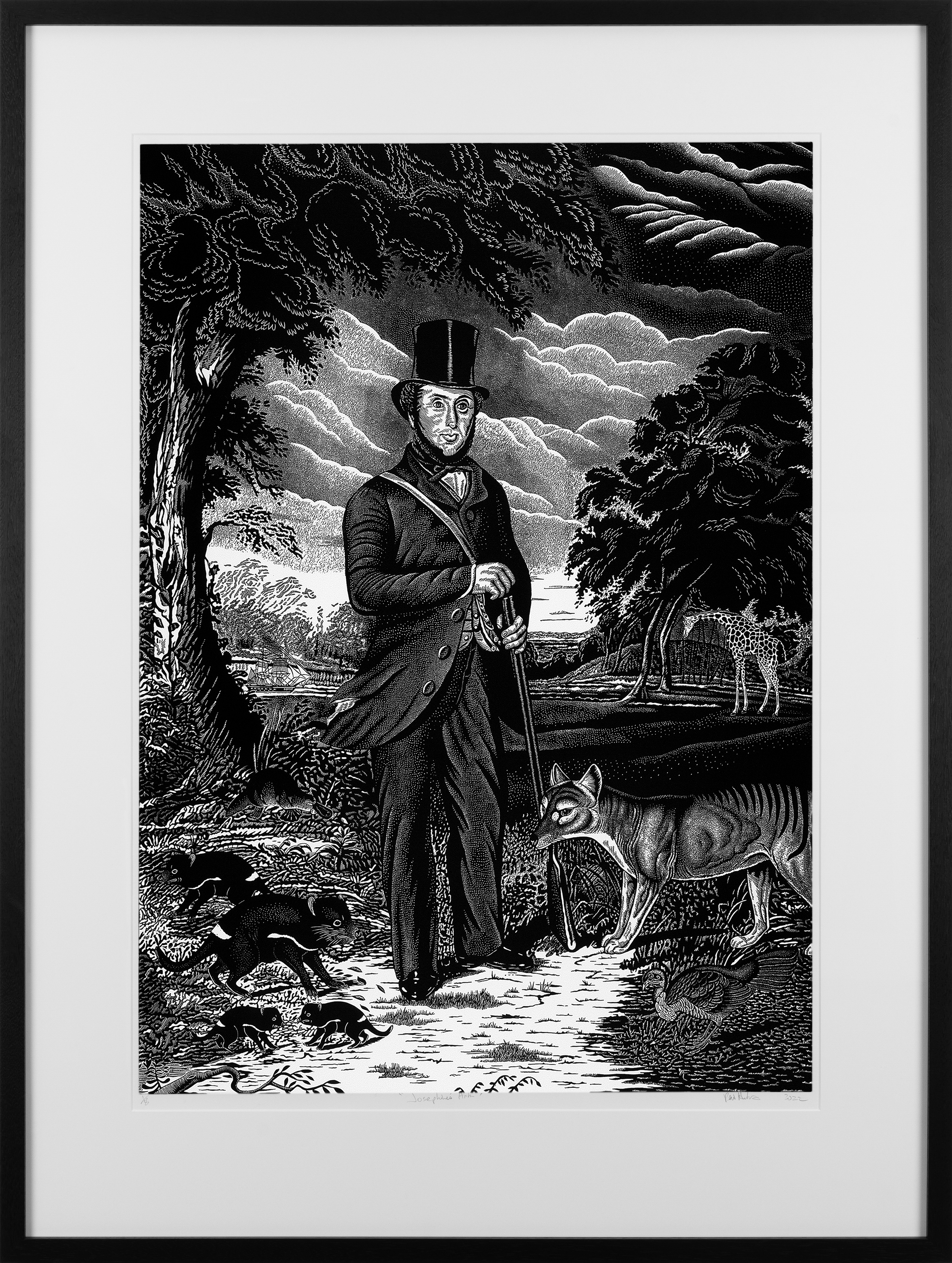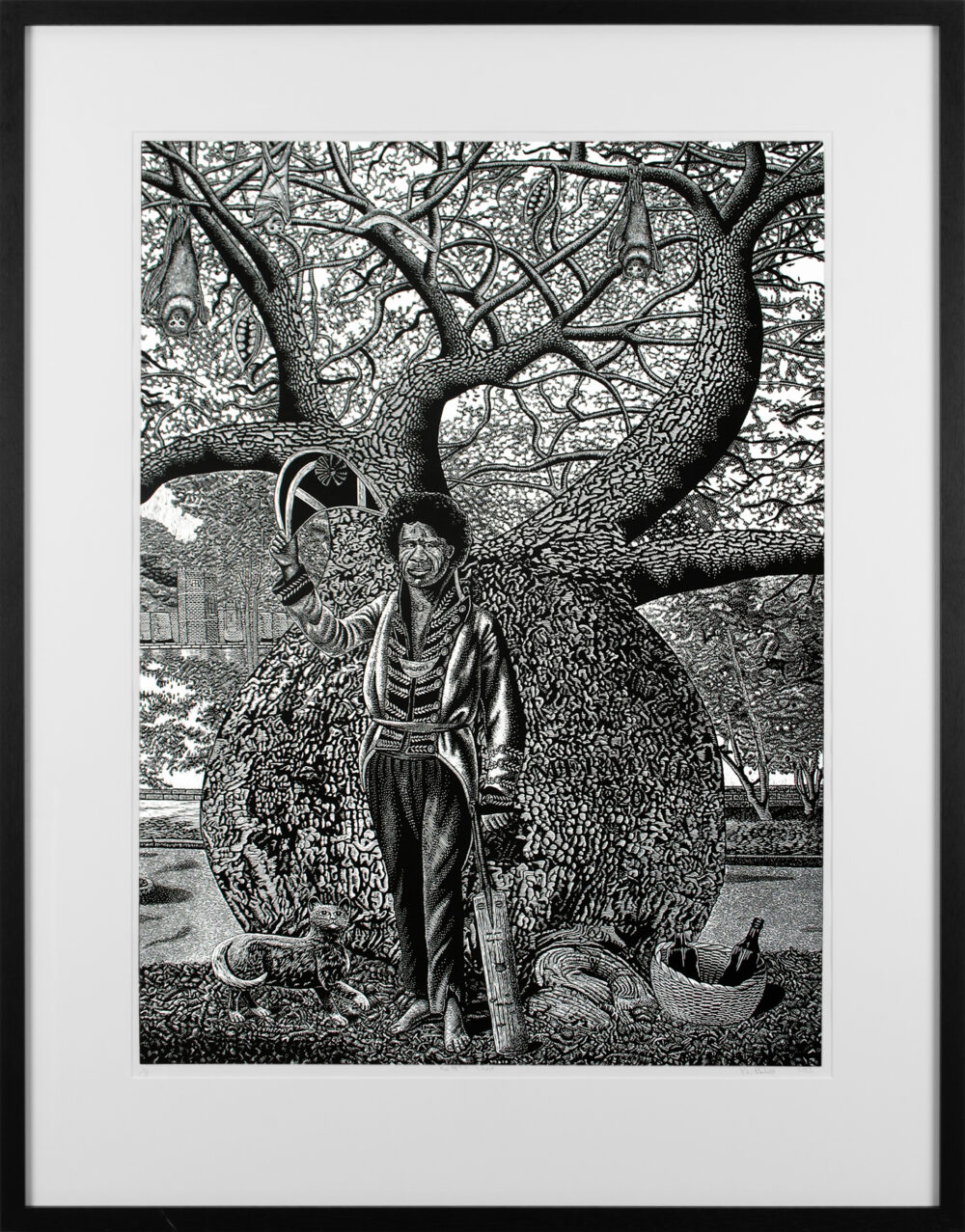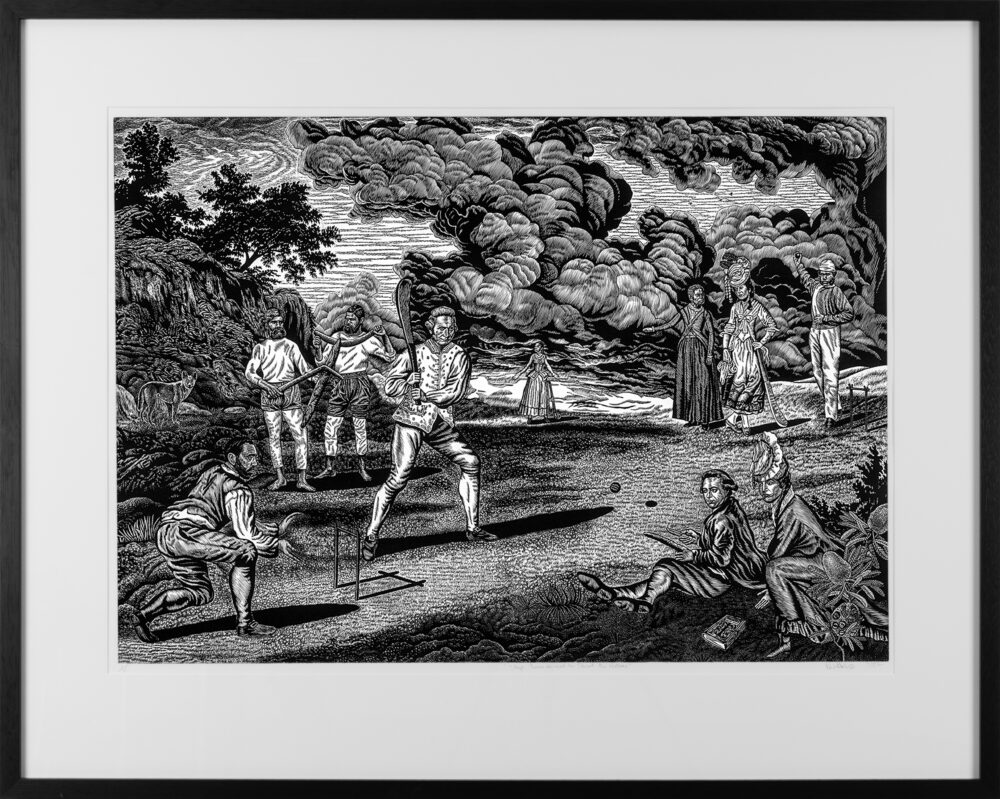

The central figure, John Gould, is taken from a c.1839 oil painting by Henry Williams. Gould is splendidly attired for a collecting foray in the Tasmanian bushland during his eighteen-month visit to the colonies. On his return to England, Gould published his beautifully illustrated books The Birds of Australia and The Mammals of Australia. The images of the platypus, bush turkey, Tasmanian tiger, and Tasmanian devils are adapted from the hand-coloured lithographs found in these publications. The young giraffe grazing under the trees was one of three sent to Europe in 1827 by Muhammad Ali Pasha of Egypt. This particular giraffe was a gift to King George IV but unfortunately it died within two years of its arrival in England. The King commissioned the then young Gould, who was a highly skilled taxidermist, to stuff his recently deceased pet. The King’s request gave Gould his first taste of publicity and an understanding of the public’s growing interest in natural history and ‘the exotic’.
Opposite the giraffe, Charles Darwin’s HMS Beagle is shown berthing at Hobart Town in 1836, during its five-year world voyage. Upon his return to England in 1837, Darwin asked Gould to classify several new species of birds he had collected from the Galapagos Archipelagos. Gould identified nine new species of brown finches, which later were known as ‘Darwin’s Finches’. The differences between these species later played an important role in Darwin’s ‘theory of evolution’.
A loyal Tasmanian tiger (Thylacine) stands at Gould’s side, as if posing for posterity. Unfortunately, the last Tasmanian tiger died in 1936 at a Hobart Zoo, less than 100 years later. After numerous sightings and optimistic attempts at cloning, the striped marsupial’s extinction now seems certain. A group of Tasmanian devils play in the foreground and, upon closer inspection, it is apparent they are identical. This questions the likelihood of success by Devil Ark to successfully breed a ‘free-range’ colony of devils at Barrington Tops in New South Wales. Unfortunately, the genetic diversity of devils in Tasmania is limited, and the species’ extinction may have already commenced.
-Rew Hanks
Devil’s Garden, 2011
Price range: $2,000 through $2,900
The central figure, John Gould, is taken from a c.1839 oil painting by Henry Williams. Gould is splendidly attired for a collecting foray in the Tasmanian bushland during his eighteen-month visit to the colonies. On his return to England, Gould published his beautifully illustrated books The Birds of Australia and The Mammals of Australia. The images of the platypus, bush turkey, Tasmanian tiger, and Tasmanian devils are adapted from the hand-coloured lithographs found in these publications. The young giraffe grazing under the trees was one of three sent to Europe in 1827 by Muhammad Ali Pasha of Egypt. This particular giraffe was a gift to King George IV but unfortunately it died within two years of its arrival in England. The King commissioned the then young Gould, who was a highly skilled taxidermist, to stuff his recently deceased pet. The King’s request gave Gould his first taste of publicity and an understanding of the public’s growing interest in natural history and ‘the exotic’.
Opposite the giraffe, Charles Darwin’s HMS Beagle is shown berthing at Hobart Town in 1836, during its five-year world voyage. Upon his return to England in 1837, Darwin asked Gould to classify several new species of birds he had collected from the Galapagos Archipelagos. Gould identified nine new species of brown finches, which later were known as ‘Darwin’s Finches’. The differences between these species later played an important role in Darwin’s ‘theory of evolution’.
A loyal Tasmanian tiger (Thylacine) stands at Gould’s side, as if posing for posterity. Unfortunately, the last Tasmanian tiger died in 1936 at a Hobart Zoo, less than 100 years later. After numerous sightings and optimistic attempts at cloning, the striped marsupial’s extinction now seems certain. A group of Tasmanian devils play in the foreground and, upon closer inspection, it is apparent they are identical. This questions the likelihood of success by Devil Ark to successfully breed a ‘free-range’ colony of devils at Barrington Tops in New South Wales. Unfortunately, the genetic diversity of devils in Tasmania is limited, and the species’ extinction may have already commenced.
-Rew Hanks












